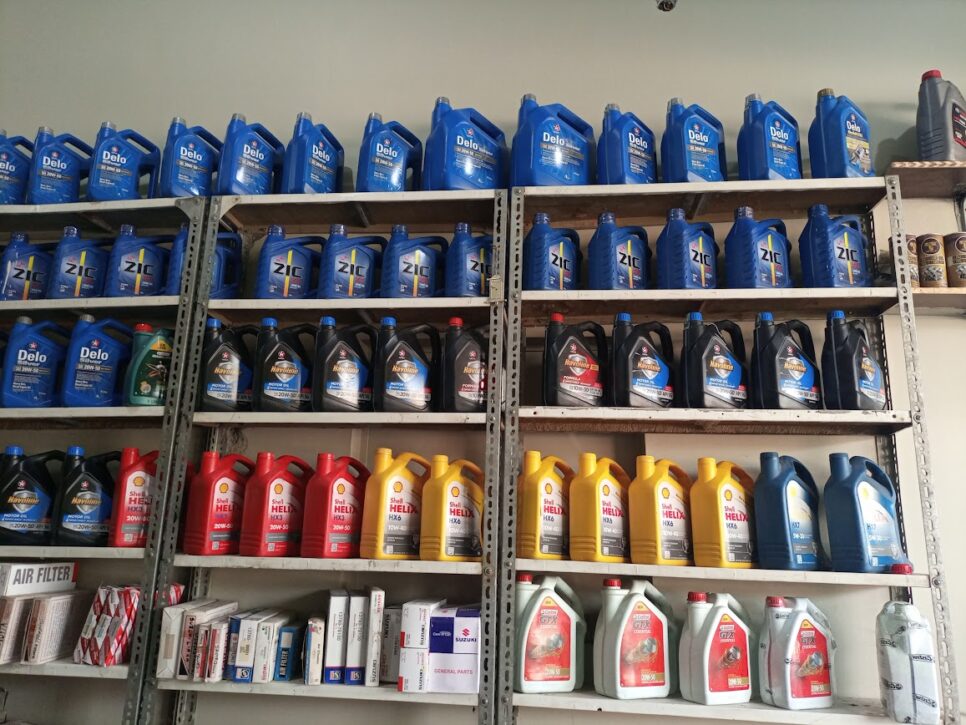Fake engine oils are more common than you think. You never know if your next engine oil might seem genuine from the bottle, but inside is a fake and used engine oil that was made somewhere in Lahore’s illegal engine oil factory.
Here’s how to spot those fake oil that seems 100% legit due to the original oil bottle.
Peep on the Seal

They can source original oil bottles but can’t source the original seals. These fake oil manufacturers would use a fake seal, but the catch is that the seal would be so freakingly genuine that no average person can tell if it’s really copied or not.
Here are some points to catch:
See the bubbles in the seal: Original manufacturers use air-sealed chambers to seal the seal. Fake oil sales probably have bubbles in the seal because they don’t have enough money to buy air-sealed chamber sealing machines, and they most probably use manual methods to put seals through heat guns.
Check for plastic quality: Original manufacturers use good-quality plastic that isn’t easy to source in the market. These fake oils use low-quality, cheap plastic for the seal. Try to look closely and rub your hand over it. If it looks cheap, it most probably is a fake oil.
What if the original oil manufacturer doesn’t use a plastic seal? We got a solution for that as well:
Check the Cap’s Seal
When you open a bottle of cola, do you hear that click sound? That’s the sound of the plastic cap seal, also known as the “tamper-evident seal.” Peep very closely to see if the seal is intact.
Usually, in used bottles, they remove the seal and put on their own homemade seal, which has a poor finish and is not perfect. On the original oil bottles, the seal will be intact and precise, with every joint matching the other joint. You must have good eyesight and good sense to recognize the seal.

Smell of the Oil
Unfortunately, you’ll need to purchase oil for this situation. However, the good news is that you can protect your car’s engine in the process.
Engine oil, particularly from reputable brands, has a distinct and typically neutral odor. Fake or low-quality oils may smell noticeably different due to the use of inferior or contaminated ingredients. Genuine engine oil typically has a mild, somewhat neutral smell. Depending on the type and brand, it may have slight chemical undertones, but these aren’t that oversmelly.
Fake oil might smell burnt even before you use it. This could indicate that the oil has been recycled or improperly refined. Used oil that’s been reprocessed may still carry contaminants or remnants from its previous use to a noticeable burnt or acrid smell.
Genuine engine oil is formulated to be safe for the engine and the environment, and it doesn’t have an intense chemical odor. Fake oil, on the other hand, may contain cheaper, low-grade chemicals or synthetic substances that give it a pungent chemical smell.
Must Buy Oil from a Reputable Seller
Always purchase oil from authorized dealers, reputable retailers, or well-known online platforms. Avoid random street vendors or obscure online sellers offering prices that seem too good to be true—these are common sources of counterfeit products. When shopping online, check user reviews, seller ratings, and the store’s overall reputation to verify authenticity.
Alternatively, you can go directly to your car manufacturer’s official 3S dealership, but keep in mind that you’ll be required to use their brand of engine oil, with no other options available.
These were some tips from our side, best of luck for shopping the engine oil for your car!






